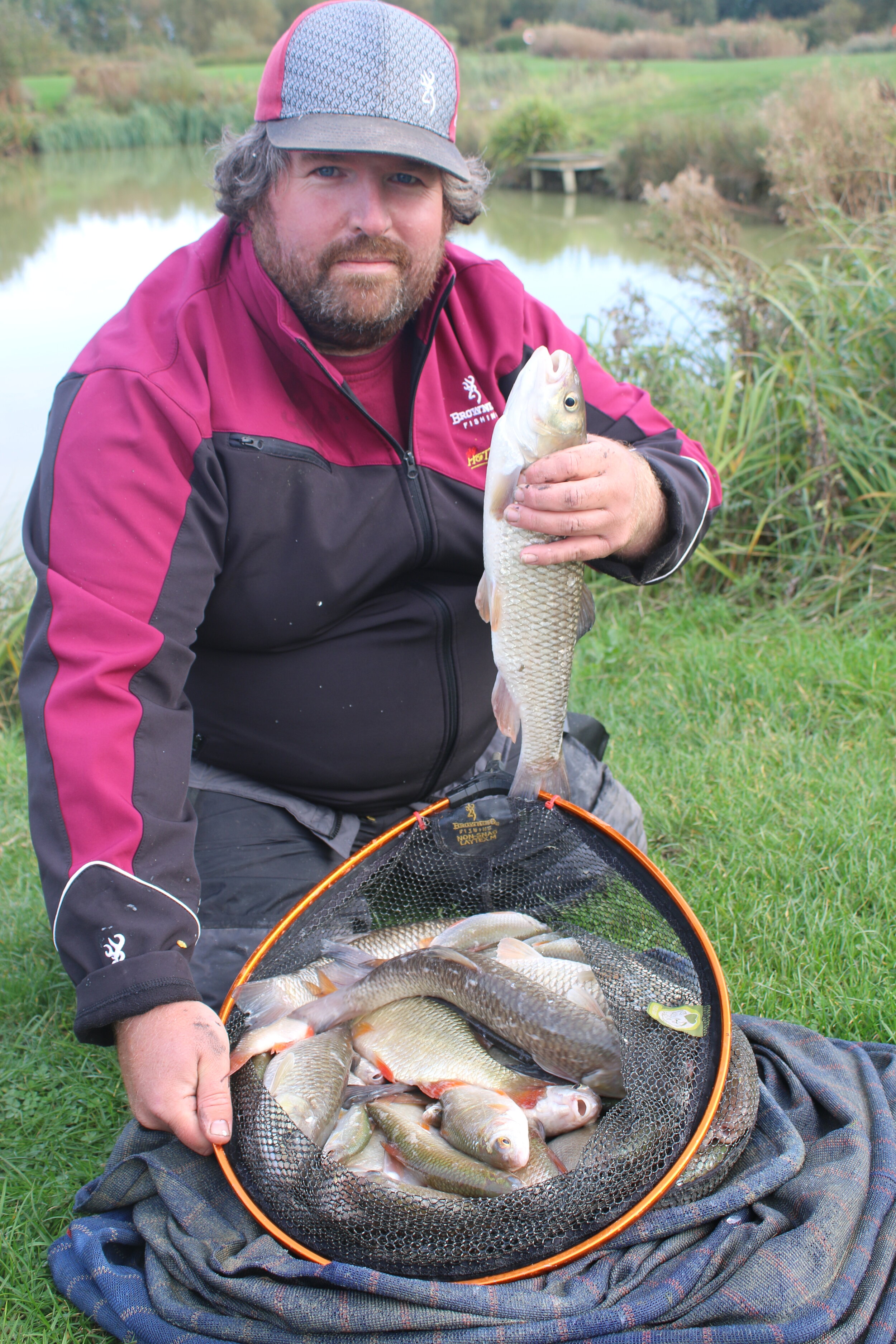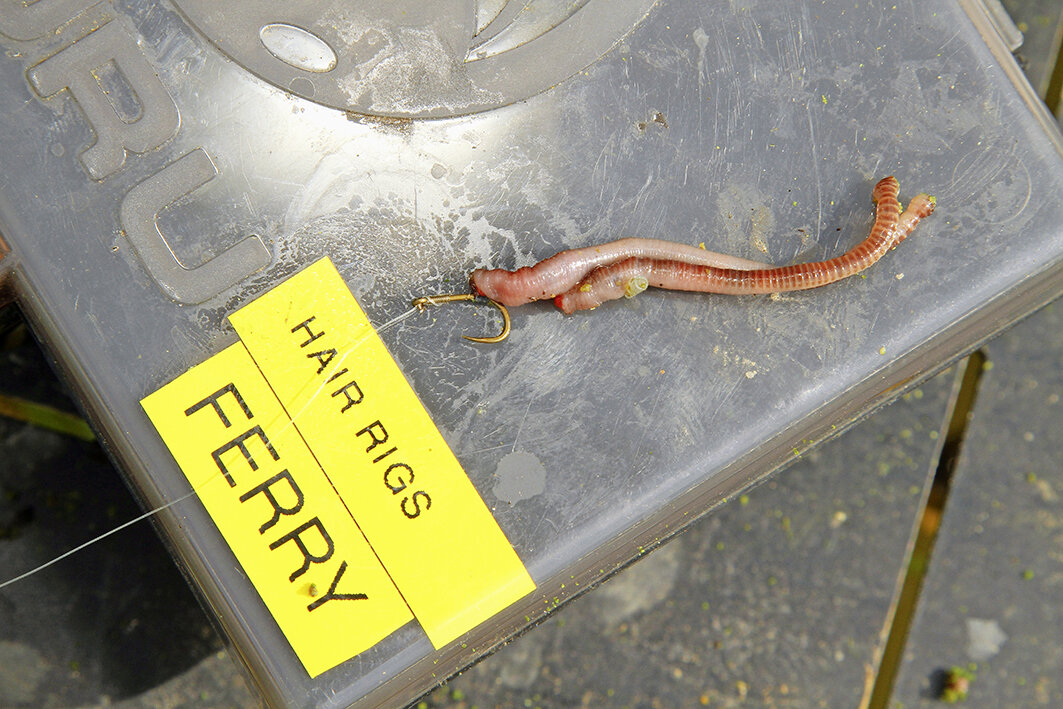How to catch big fish with Martin Bowler
Fungus-filled fields, dew-dripping grass and big red skies are my cue to get excited about autumn.
Big fish are back on the agenda and I can’t wait to get going. So don’t mourn summer’s passing – the real season begins now and to help you, here are my top 10 seasonal tips.
1) Boost your pellets
Big bream love fishmeals in all their guises, but if there was a favourite it would have to be pellets. I struggle to imagine when I wouldn’t include these in my feed.
To maximise my chances I give them a boost the night before. I give the quantity I need for a session a liberal dose of oil – Sticky’s Cap is my favourite. Once they are suitably saturated I coat them in a fishmeal-style groundbait. With these in your swim it won’t only be you spotting the oily slick. Bream won’t be able to resist them.
2) Naked chod over silkweed
If the lake bed is covered in food-rich silkweed, a chod rig will provide you with a great presentation for a big carp.
To my mainline I connect a Weedy Green E-S-P tapered leader via a Mahin knot. Next I slide on a float stop and wide-bore bead that will pass over it if any force is applied. The distance between chod and lead is typically set at 6ft. An E-S-P chod follows in front of another stop and bead. The lead is attached via a swivel and a 6ins link of 10lb line. A pop-up and tungsten putty weight finish a brilliant rig.
3) Balance your bait
A chub will either pick the bait up in its lips or very gently suck at it – a balanced hookbait, though, will enter the mouth quickly and easily.
Casters and bread both have natural buoyancy, but other baits need a little more preparation.
Maggots can be made to float and critically balance a small hook. Half-submerge them in water and they’ll absorb extra oxygen through their skins and ready to use in 15 minutes. Or try combining carp-style paste baits with a small piece of crust (above) for a balanced bait to fool fickle chub.
4) Boost the Attraction
With autumn comes rain, and floodwater spewing down our river systems. This is a cue for barbel to go on a feeding frenzy and this isn’t a time you want to miss out on. A chocolate-coloured river can look daunting, but the colour will improve your chances of a catch.
Use the increased flow to your advantage by boosting the attraction signals of your bait. I take my Krill dumbbells, which are potent anyway, and soak them in neat Krill liquid. As if that wasn’t enough, I then give them a paste wrap.
5) Get on the real ronnie
The current star of the carp world is the Ronnie Rig. I tried it, but the additional metalwork reminded me of a bent hook rig.
Fortunately I have been friends with its secretive inventor, known only as Ronnie, since childhood. He told me that what is currently being promoted is very different from the original. I now make mine as follows...
Using non-slip 25lb plus braid I create a slip D arrangement (details easily found on the internet) around a size 4 Cryogen Curve Shanx with a rig ring running up and down the braid.
Next a piece of shrink tubing is pushed over the braid and up on to the shank for the time being. A small E-S-P Uni Link swivel is then tied as close as possible to the hook eye with three simple overhand knots before the tubing is pulled back down and shrunk. With a pop-up tied on and putty around the tubing to sink it, this rig has caught me carp to 59lb this year!
6) Get mobile for perch
Autumn perch are a delight, but locating them can be an issue. So now I prefer to be mobile and seek them out with lures.
Drop shotting, or working jigs and spinners, can all help find the perch shoals.
After a spring and a summer off from the hordes of anglers that will soon descend you can take advantage of their naïvety. So don’t delay – the early bird catches the worm!
7) Strong and simple for pike
To catch a big pike you must first find a water capable of producing one – otherwise no fancy rig or item of tackle will help. Specimen pike are far rarer than carp of similar proportions. Rarely are known big pike caught year after year. They are very delicate. To protect them, play your cards close to your chest if you know of one.
My tackle is strong and simple – a running lead, 60lb braid and 28lb Drennan green wire (above).
8) don't give up on tench
Just as with carp, autumn will see tench bulk up in preparation for winter, and a good fish is possible. In the warmer months the margins were an excellent place to fish, but as the cold bites they return to deeper water.
This generally suggests legering but in my experience, if it’s possible to use it, the float will always catch more fish. Try a slider float (above), making sure you take time to plumb up accurately, and I guarantee the tip will pull under more times than a bobbin will ever rise.
9) Wrasse on the rocks
Wrasse are the perfect species for the coarse angler who wants to dip his toe into salt-water fishing. A carp/spod rod will suffice, combined with a big pit reel and 20lb-30lb line.
A simple paternoster with an old 6oz lead on a weak link, followed by a 30lb trace and a 2/0 hook, is all that is needed. My favourite bait is a whole hermit crab, but wrasse have catholic tastes and a prawn from the supermarket will soon win a bite.
10 Try the float for barbel
Now and then it’s good for the angling soul to do something in style. If you have never caught a barbel on the float, try it now! An Avon-style rod, a reel loaded with 7lb line and a size 12 or 14 Super Spade hook will do.
A big buoyant float like a Loafer (above) ensures you control the river, not the other way round. Maggots are my top bait, with caster and hemp a close second. Feed every trot, and sooner or later that first strike and hitting the brick wall will put a smile on your face.




















